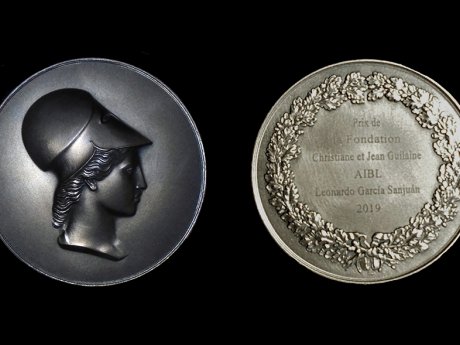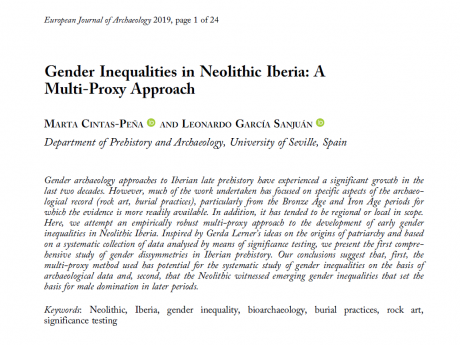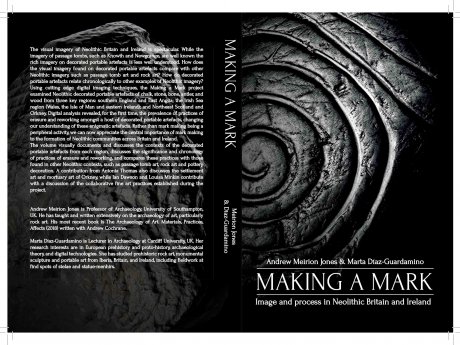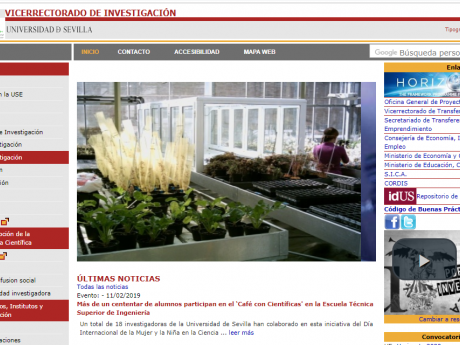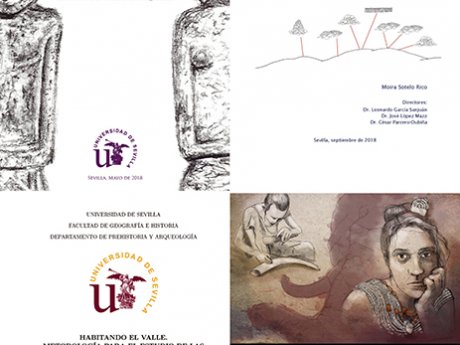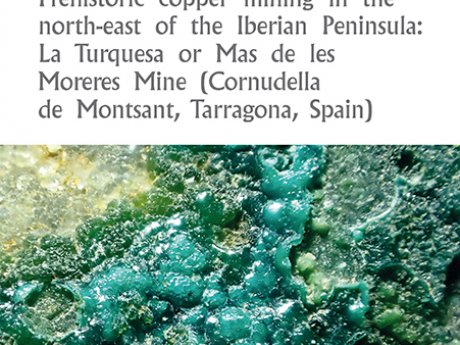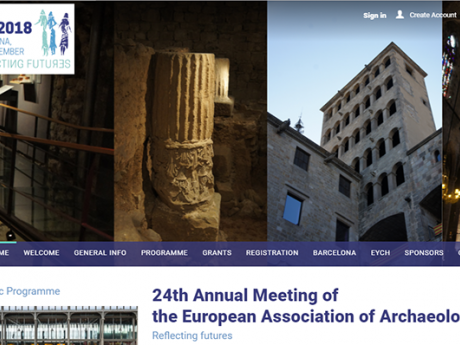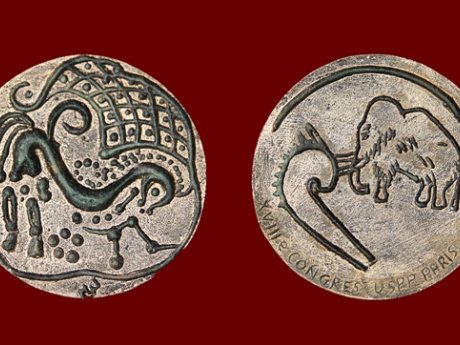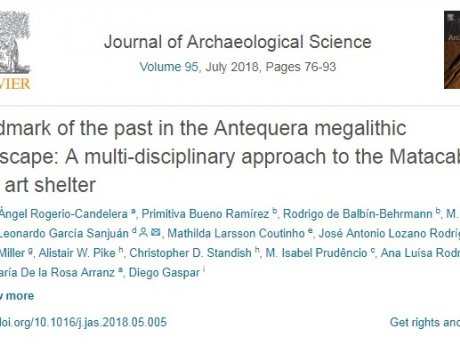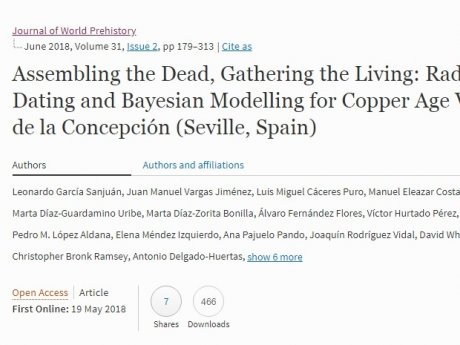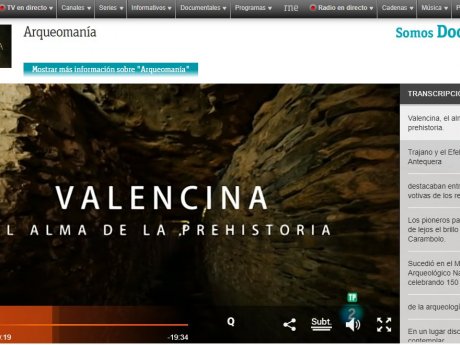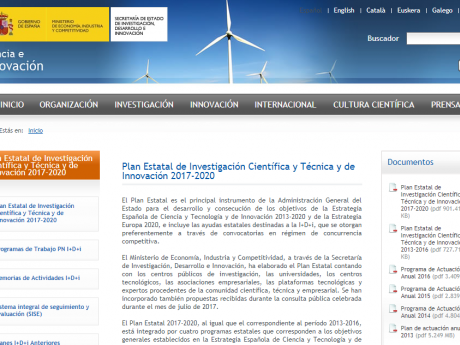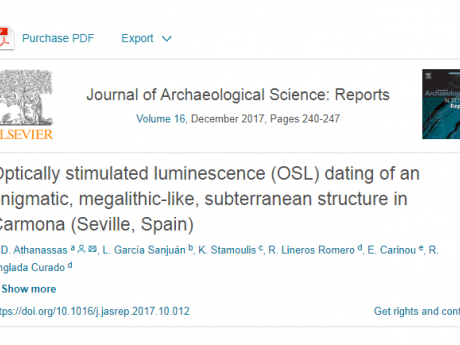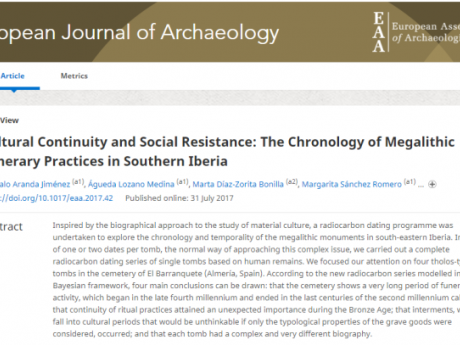Noticias |
We receive the 2019 “Christiane et Jean Guilaine Foundation” Award of the French Academy of Good Letters
Professor Leonardo García Sanjuán receives the 2019 “Christiane et Jean Guilaine Foundation” Award of the French Academy of Good Letters. In his speech at the award ceremony held in Paris, professor Jean Guilaine highlighted the contribution of the research group ATLAS to the advancement of the study of Western European Late Prehistory.
The European Journal of Archaeology publishes our paper on gender inequality in Neolithic Iberia.
Our paper "Gender Inequality in Neolithic Iberia: A Multi-Proxy Approach" has been published on the EJA first view page. This paper is a major contribution towards the understanding of the origin of inequality between men and women in Iberian Late Prehistory. The research is based on a multy-proxy approach involving a systematic collection of bioarchaeological and funerary data, subsequently examined by means of significance testing. Our conclusions suggest that, first, the multi-proxy method...
We publish the book: “Making a Mark: Imagery and Process in Neolithic Britain and Ireland”
We publish a new book titled "Making a Mark: Imagery and Process in Neolithic Britain and Ireland" with Oxbow. The book, co-authored by Marta Díaz Guardamino Uribe (University of Durham) and Andrew Meirion Jones (University of Southampton), publishes the outcomes of a research project with the same title funded by the Leverhulme Trust. The project revised more than a thousand decorated artefacts from Neolithic Britain...
Our Montelirio tholos research features at the front page of El País and becomes the most-viewed item on the newspaper’s website.
On Wednesday February 6th 2019 Spain’s most circulated newspaper, El País, featured our Montelirio tholos research on the front page of its web site. The item quickly became the most viewed bit of news in the newspaper that day.
We are awarded the University of Sevilla Prize to Most Cited Researcher in the Field of Humanities
Professor Leonardo García Sanjuán receives the University of Sevilla Award as Most Cited Researcher in the Field of Humanities.
We publish a new monograph: ‘The 2005 Excavation at the Menga Dolmen. Temporality, Biography and Material Culture in a World Heritage Monument’
We publish a new monograph, titled ‘The 2005 Excavation at the Menga Dolmen. Temporality, Biography and Material Culture in a World Heritage Monument’. This book, co-published by the University of Sevilla and the Ministry of Culture of the Andalusian Regional Government results from the projects ‘Nature, Society and Monumentality: High-Resolution Archaeological Research into the Megalithic Landscape of Antequera (HAR 2013-45149-p) (2014-2017), part of the national...
Four PhD Theses submitted in 2018
Four PhD Theses were submitted by members of our research group, including ‘Gender Inequality in Iberian Prehistory. A Multi-Variable Approach’ (Marta Cintas Peña, July 2018), ‘Ivory in Copper Age Iberia. A Technological, Experimental and Contextual Approach to the Ivory Collections of the Valencina de la Concepción-Castilleja de Guzmán Mega-Site (Seville)’ (Miriam Luciañez Triviño, September 2018), ‘Forgotten Landscapes in the Uruguayan Highlands. Stone Architecture in the...
We participate in the scientific edition of the book ‘Prehistoric Mining in the North-East of the Iberian Peninsula: La Turquesa or Mas de les Moreres Mine (Cornudella de Mont Sant, Tarragona, Spain)’.
We participate in the scientific edition of the book ‘Prehistoric Mining in the North-East of the Iberian Peninsula: La Turquesa or Mas de les Moreres Mine (Cornudella de Montsant, Tarragona, Spain)’ (Revista d’Arqueologia de Ponent, Special Issue nº 2) as well as in the research on the research of this Prehistoric copper mine, the first to be excavated in the NE of the Iberian Peninsula.
We participate in the annual meeting of the European Association of Archaeology, held in Barcelona (5-8th September 2018) organising four sessions and presenting six papers
Our participation in the annual meeting of the European Association of Archaeology, held in Barcelona (5-8th September 2018), includes the organisation of four sessions (“Human-Made Environments: The Development of Landscapes as Resource Assemblages”, “Human, Posthuman, Transhuman Digital Archaeologies”, “The Future of Rock Art – Documentation, Research, and Outreach”, and “ Moving Forward Through a New Gendered Funerary Archaeology: Current Research and New Perspectives on Differences...
The UISPP awards it Medal for Best Neolithic Book to our monograph “Montelirio. A Great Megalithic Monument of the Copper Age”
During the meeting held in Paris (June 3rd-9th 2018), the Scientific Committee of the International Union of the Prehistoric and Protohistoric Sciences (UISPP) has awarded its Medal to Best Neolithic book to our monograph “Montelirio. A Great Megalithic Monument of the Copper Age”, published by the Cultural Ministry of the Andalusian Government in 2016. We thank the UISPP for this great honour, which is a...
Journal of Archaeological Science publishes our study of the Matacabras rock art shelter, located at La Peña de los Enamorados (Antequera)
The June 2018 issue of Journal of Archaeological Science publishes our paper “Landmark of the past in the Antequera megalithic landscape: a multi-disciplinary approach to the Matacabras rock art shelter”. This paper is a major contribution towards the understanding of Antequera’s complex megalithic landscape, as we examine here the relationship between a natural formation, La Peña, the graphic motifs depicted in the Matacabras shelter, and...
Journal of World Prehistory publishes our long paper on Valencina radiocarbon dating and Bayesian modelling.
The June 2018 issue of Journal of World Prehistory features our long paper “Assembling the dead, gathering the living: radiocarbon dating and Bayesian modeling for Copper Age Valencina de la Concepción (Sevilla, Spain)”. After five years of work, and with the support of The Time of Their Lives ERC-funded project led by professor Alasdair Whittle (University of Cardiff, UK), this paper presents a large number...
Our Valencina research features in Arqueomanía, the archaeology documentary series of La 2 (RTVE, Spanish National Television).
The La 2 channel of Spain’s National Television (RTVE) broadcasts a report on our recent research at the Copper Age sites of Valencina de la Concepción-Castilleja de Guzman and La Loma del Real Tesoro. This report includes various interviews, footage from various locations at both sites as well as a newly made virtual reconstruction of Montelirio, the great megalithic tomb that has recently yielded astonishing...
We receive new funding for our Antequera Dolmens Site on-going research
The Spanish Government, through its Secretaría de Estado de Investigación, Desarrollo e Innovación (State Secretary of Research, Development and Innovation), approves our application for further funding for our ongoing research at the Antequera Dolmens Site. The project “Megalithic Biographies: The Antequera Monumental Landscape in its Temporal and Spatial Context (BIO-MEGA)” has been awarded a 103.000€ grant for the period 2018-2020. The epistemological framework of reference...
Journal of Archaeological Science Reports publishes our OSL-dating study of the Carmona megalithic structure.
Journal of Archaeological Science Reports publishes our paper “Optically stimulated luminescence (OSL) dating of an enigmatic, megalithic-like, subterranean structure in Carmona (Seville, Spain)”. The structure had been initially categorized as a dolmen of the Chalcolithic period, but the results of the OSL dating suggest a maximum age for the structure that is no earlier than the 3rd century BCE, excluding it from the major phase...
We publish in European Journal of Archaeology
We publish the paper "Cultural Continuity and Social Resistance: The Chronology of Megalithic Funerary Practices in Southern Iberia" in the European Journal of Archaeology.
